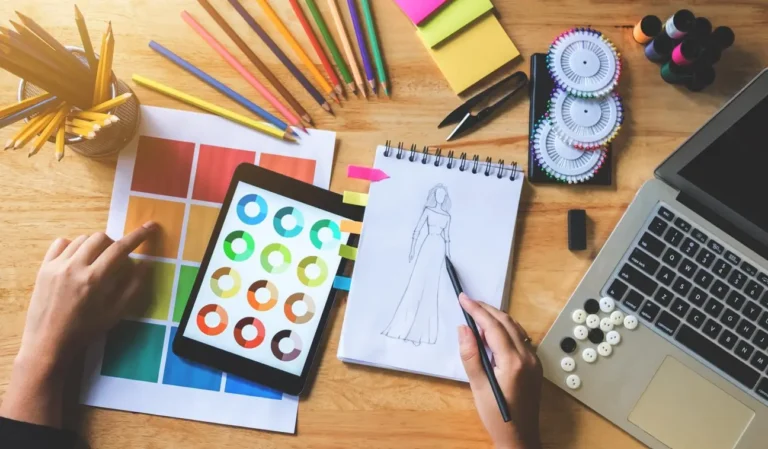The modern entertainment market has witnessed the growth of a surprising union where high fashion unites with video game development. The development demonstrates more than promotional methods. This modern cultural trend transforms how we interact with these two sectors. Leading fashion businesses located in Paris along with Tokyo-based enterprises now direct their talent toward virtual domains because vast numbers of gamers keep busy in these online environments shaping their virtual self-representations.
The Digital Runway: How Fashion Entered Gaming
The development of fashion games as parallel industries took more than just a few years to form. Leaders in the fashion industry started perceiving virtual domains as possibilities that extend traditional artistry into gaming environments. The initial fashion-gaming collaborations started as just test runs using basic branded material or minor promotional slots inside traditional video games. Despite their limited size, these early attempts demonstrated the gaming players’ desire to merge the digital with their existing offline fashion style.
The fashion collaborations introduced different methods for virtual players to reveal their individual personalities while navigating dense player populations. Both fashion and video game design operate using comparable psychological approaches to give players brief opportunities for personal style distinction while working within predefined parameters.
The first straightforward marketing alliances between video games and clothing companies have evolved into intricate joint ventures that have a fundamental influence on game development. Fashion establishments assist with gaming and environment design while incorporating their distinct visual identities to develop gaming aesthetics. The merging of design concepts between the gaming and fashion industry results in elaborate gaming visuals and shapes brand interactions that occur directly within video game spaces.
Beyond Cosmetics: Fashion’s Structural Impact on Game Design
Fashion offers power which transcends the functional use of character cosmetics. Designers apply their in-depth understanding of color theory, silhouette design, and material science to make significant adjustments to the look and feel of games. By altering traditional aesthetic conceptions, Balenciaga achieves more than just increasing product sales with their collaboration with League of Legends and Fortnite.
Game developers welcome fashion experts to their early development stages to acquire visual harmony concepts and seasonal color collection guidelines as well as runway presentation know-how. The result of this change has made game visuals more integrated because character designs used to float without connection to their game worlds. Contemporary collaborations between fashion houses and game studios show continuous growth because these companies now run exclusive game development units which employ designers and artists from both fashion and gaming backgrounds.
Economic Ecosystems: Virtual Fashion as Digital Currency
Virtual fashion has caused the most significant economic changes among all other effects. Digital fashion pieces now function as actual expensive goods although they match the market value of their conventional versions. This development has transformed virtual games’ seasonal collection strategies and limited-edition drops as part of their monetization system, which enhances player activity while increasing revenue streams.
Consumers exhibit identical fashion exclusivity preferences in electronic gaming communities as they do in real-world fashion arenas because they want to stand apart in virtual communities. Virtual games present events during which they organize fashion runways accompanied by exclusive limited-edition item drops just like actual fashion week events. Because the planned events in their games both boost user engagement and establish steady economic patterns, game creators can accurately forecast their earnings.
Cultural Crossover: Gaming Aesthetics in Fashion
The effects pass in each direction. Runway shows now display gaming-inspired design elements which include pixel graphics and gaming symbols as well as hardware components merged into clothing apparel. The feedback system generates ongoing updates to both industries that recycle their visual elements and business operations.
New fashion design inspiration comes from gaming’s flexible color patterns, alongside its futuristic body artwork and its imaginative materials and elements, which normal fashion sources would not create. Opportunities in both creative fields are expanded by this cultural tendency of blurring the lines between physical and digital showcases.
In Closing
The convergence of fashion and gaming serves as more than a passing trend since it defines new approaches for digital creative industries to work together. Virtual environments establish a growing importance as social meeting spaces and personal expressive platforms where the influence of fashion on their development will become increasingly critical. The era of video games benefits from two centuries of fashion design, which provides game developers with refined aesthetic strategies and visual structures. Gaming opportunities give fashion companies access to cutting-edge markets and tech-savvy customers who embrace new goods.
In order to create new expressive techniques that were previously impossible to achieve through independent development, these industries share expertise. Advanced collaborative options that combine digital and physical fashion will be made possible by technological advancements, which will also enhance gaming quality and fashion engagement.
Also Read-Achieving Natural Wellness Through Modern Skincare Techniques
